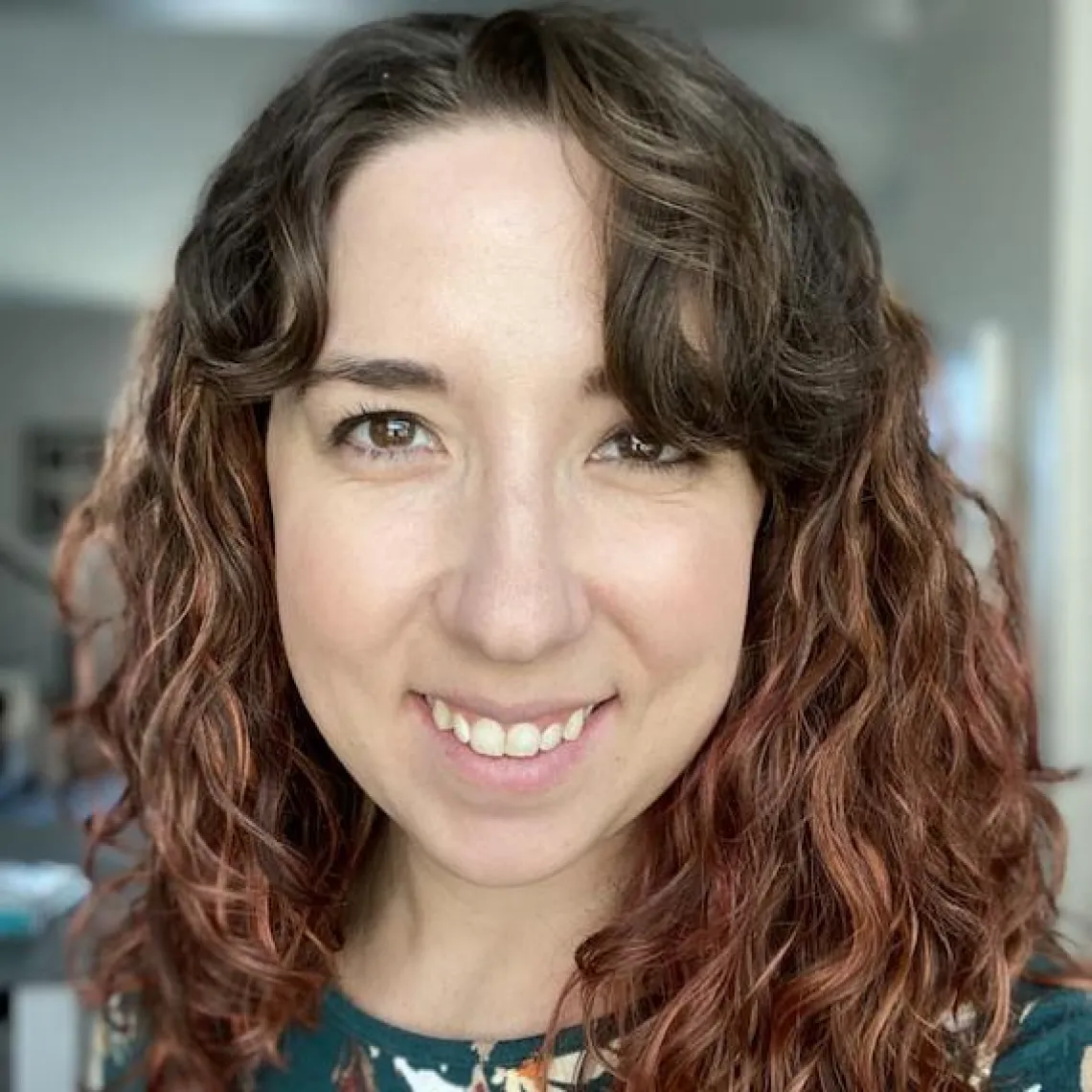Meet Dr. Carter!

Dr. Morgan Carter is a postdoc in the School of Plant Sciences. Originally from North Carolina, she earned her B.S. in biochemistry from North Carolina State University and her Ph.D. in plant pathology from Cornell University. In this interview, Dr. Carter is sharing some exciting information about her research at the University of Arizona, her career goals, and her experience with the CIRTL Program.
Can you tell us a little bit about yourself?
I always start with the fact that I am from North Carolina, because I say y’all and wear cowboy boots! I got my B.S. at North Carolina State University and my Ph.D. at Cornell University before moving out here to Tucson in July 2020 with my husband and aussie doodle pup.
What kind of research do you do? What are you excited about?
I work on bacteria that live inside of fungi (endohyphal bacteria) to learn how they can form these relationships and the impact their fungal hosts. Why should anyone care about that? Fungi and bacteria interact wherever they are both found together, so basically everywhere, including during infection of plants or people. We want to control diseases and improve human and plant health - understanding the rules for different relationships between microbes and their host can help us do that.
Who do you work with?
At the University of Arizona, I work in Dr. David Baltrus’ lab and collaborate with Dr. Betsy Arnold’s lab, both in the School of Plant Sciences.
What do you want to do after your time as a postdoc at UArizona?
My career goal is to become a research/teaching professor at a land grant university to teach and mentor the next generations and conduct research in agriculturally relevant host-microbe-microbe interactions. I’m also really excited about improving training for grad student and postdocs, including facilitating professional development.
What professional development activities have you done and found valuable?
While I’ve known I wanted to be an academic for a while, I also wanted to explore what other careers were out there. I have organized many “Career Explorations” and other events for graduate students and postdocs to learn about different career paths one can take with a Ph.D., from working in nonprofits, to government, to industry. I found some of these nonacademic career paths interesting, but ultimately landed where I started. But even knowing I was on an academic trajectory, there is a lot more to being a professor than lab research. Training in science communication and completing grant applications have also been important for me to feel competitive for an academic job.
What is CIRTL? Can you tell us about the CIRTL certificate program that has been developed especially for postdocs?
The CIRTL (Center for the Integration of Research, Teaching, and Learning) Network is a group of universities across North America that want to improve undergraduate education by training future faculty in teaching practices that are grounded in learner-centered education. Programs in CIRTL are often geared towards graduate students but can be participated in by postdocs. CIRTL@UArizona wanted to customize a training program for postdocs accommodating their unique situations. We focused on developing a manageable, but valuable, Accelerated Postdoc Pathway Program that could be accomplished within one year so even short-term postdocs could benefit.
Why did you get involved in CIRTL? What has your CIRTL experience done for you? What is your current role in CIRTL at UArizona?
When I started my postdoc, I wanted to get more experience in teaching because I knew I had ideas and opinions, but I didn’t know the right words to use. Most of my thoughts on teaching came from being a student, as opposed to evidence-based practices. I joined CIRTL to work on my vocabulary and figure out who I wanted to be as an educator, just like I was doing as a researcher in the lab. Over my year of involvement in CIRTL developing the Accelerated Postdoc Pathway, and being a pilot participant, I have gained two certificates and invaluable coteaching experience. I greatly increased my teaching confidence and proficiency, plus gathered useful resources to build on. Not to mention, my teaching statement for faculty applications is way better now! It was even helpful to do the ePortfolio and reflect on my progress.
What are the benefits of earning a postdoc CIRTL certificate? What can postdocs expect (to do) once they get involved with CIRTL?
Besides just a line on your CV for the certificate(s), the process of completing the Accelerated Postdoc Pathway will improve communication skills, provide guidance on syllabus and assessment design, and identify resources for reflection and advancement. Through my own co-teaching experience, I was able to develop a module that I made publicly available on my website, can reference in job applications, and can adapt to future classes I may teach or guest lecture for. CIRTL activities also make for a great addition to the professional development part of a fellowship application by providing accountability, support, and structure.
CIRTL is great for those who have already done teaching and want to improve through teaching-as-research projects or discussions with other educators through faculty learning communities. But CIRTL activities are also terrific for those who are considering academic or science communication career paths and don’t have much or any teaching experience. Taking an introductory online course on evidence-based teaching or participating in a couple one-time workshops are simple ways to start. You can tailor the pathway activities to you, based on your experience! Plus, Kristin Winet is a great resource for helping you decide where to jump (or ease) into your journey.
